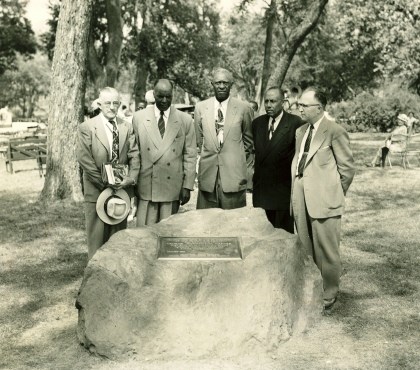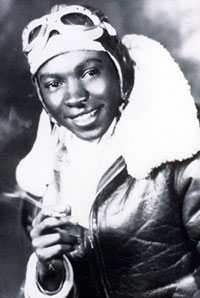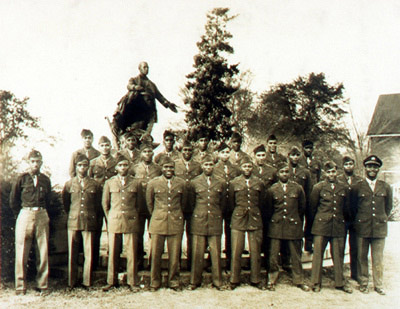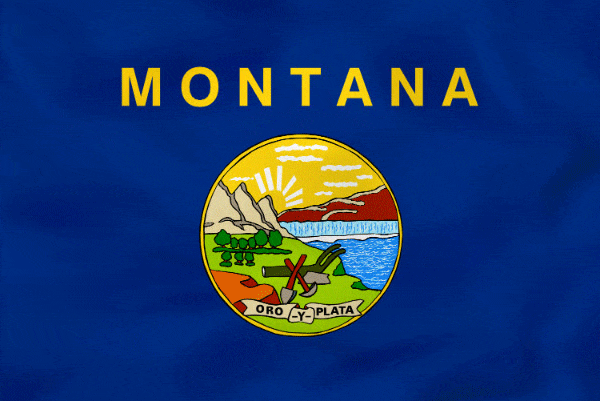an·te·bel·lumDictionary result for antebellum
/ˌan(t)ēˈbeləm/
adjective
occurring or existing before a particular war, especially the American Civil War.
https://www.nps.gov/hamp/index.htm https://www.nps.gov/museum/exhibits/hampton/index.html Here you can find a virtual field trip of the mansion.
Ridgely Compound of Hampton Towson, Baltimore County, Maryland
By Dr. David Taft Terry
For much of the antebellum period under consideration, the Ridgelys of Hampton were among the largest holders of enslaved blacks in the state of Maryland. In addition, there was a large free black community connected by kin and work to the HamptonCompound and other Ridgely properties. This study examines the Hampton Compound and its inhabitants, both black and white, to allow a deeper understanding of how slavery functioned in antebellum Maryland.
A watershed moment for blacks of the Hampton community was the death of Charles Carnan Ridgely in 1829. The ramifications of his death, or most specifically, the administration of his will, impacted hundreds of black lives. It affected the blacks that Charles Carnan "owned," as well as the ones who came to Hampton as a result of his death. Charles Carnan Ridgely's will set up conditional manumission for a number of persons enslaved at Hampton or Ridgely's other sites. An inventory of Ridgely's holdings at the time of his death in 1829 listed 303 persons enslaved by Ridgely at various sites. Further research has raised the final number of enslaved blacks to 311.
Legally, slaves over the age of forty-five could not be manumitted. The will stipulated that the aged who could not be set free be cared for by Ridgely's assigns. While the inventory does not give age information, at least 169 of the 303 were appraisedat less that one hundred and fifty dollars. This group most likely consisted of the aged who could not be manumitted. Of the remaining inventoried persons, 105 were appraised at values of at least two hundred dollars. Ridgely ordered immediate freedom for those women aged twenty-five to forty-five, and men twenty-eight to forty-five, and they likely came from this group of 105. In the various records held by the Maryland State Archives, we have uncovered at least ninety Certificates of Freedom for persons manumitted under Ridgely's 1829 will. The great bulk of these persons were freed during 1829, with others receiving freedom as late as 1843. We likely cannot recover with any certainty the exact number of men and women (and toddlers under 2) that went free immediately. However, we do know a few of their names: Jacob Carter (aged thiry-eight), John Crowmell (aged forty), Nathanial Jamison (aged thirty-one), Philip Smith (aged thirty-three), and Isaac Wilson (aged about thirty), all of whom had their newly won status certified by the Court under the oath of former Ridgely employee, Richard Green.
It is possible to investigate kinship ties through the study of surnames and possessive prefixes (as an example, Hannah's Bill) appearing along with first names. Sixty-two different surnames appeared on the inventory; "Batty" was a prominent surname, linking ten individuals. "Cummins" was also well represented with fifteen persons, as are "Johnson" (eighteen) , "Lee" (ten), and "Wicks" (nine). Possessive Prefixes also linked people on the Ridgely Properties. In all, fifty-seven persons were linked to twenty-seven other individuals by prefixes, presumably signifying kinship ties. For example, eight individuals were identified with the possessive prefix "Milly's" . There are five individuals identified as "Keziah's". "Betty's" was attached to three names, though these are distinguished from "Bett's" and "Great Betty's." Other predominant possessive prefixes among the enslaved black manumitted in 1829 included "Hannah's", "Luce's", and "Henry's."
With so many "common" surnames among the 1829 manumittees - "Brown," "Smith," "Anderson," etc. - a directory search yielded little stand-alone evidence of their post-manumission lives. The preponderance of common surnames that hampers the effectiveness of directory searchers for Ridgely manumittees also threatened any search of census records. Census enumerations before 1850 only list head of household, with other household members appearing by age, gender, race, and caste as anonymous check marks. However, a few discoveries may merit further investigation.
Gabriel "Gabe" Cromwell was freed by Ridgely's will in 1829. Twenty-nine years old at the point of manumission, Gabe Cromwell was counted in 1850 as one of several free blacks working for a white landholder. Though no other direct matches are apparent, the surnames of other slaves manumitted in 1829 ("Johnson," Brown," and "Sheridan") were attached to blacks around and near Cromwell. Another "Cromwell" - perhaps Gabriel's kin - is found elsewhere in the 2nd District of Baltimore County in 1850. A "Harriet" was enumerated as forty years old with a one year old female child, and residing with a white male of twenty-nine. No other persons are enumerated with this household. Allowing for age mistakes before or after the fact, this may be Harriet who was manumitted in September 1829 after presenting herself to the Court as a twenty-six year old woman enslaved by the late Charles Carnan Ridgely. A third coincidence involves the unmistakable name, "Harcules" or "Hercules" Brice. Brice was found among the inhabitants of Baltimore County's 1st District. This instance, however, was not attached to the man who at thirty-eight was freed by Ridgely, but rather a fifteen year old mulatto living with a white farmer and family. The name alone suggests a probable kinship link of some sort to those manumitted in 1829.
Those slaves too old to be freed by Charles Ridgely in 1829 were distributed among his heirs for the expressed purpose of caring for them, though it is not exactly clear what that meant. Certification records for those freed also suggest a wide dispersal of Charles Carnan's bondspeople not qualified for manumission. If the oath-giver designation is any clue, then Ridgely's former slaves went to his daughters Sophia (gave ten oaths) and Prudence (gave one oath), another daughter, Mary (gave two oaths), swore to the status of former slaves, whereas a son, David (gave eleven oaths), did as well. The most prominent oath-giverwas Charles Carnan's son, John, who attested to thirty-two claims of freed status. This is interesting because by his father's will, John received Hampton Plantation but no slaves. The overwhelming majority of those for whom John vouched presented themselves in 1829 or 1830.
Because his father left him no slaves, John Carnan Ridgely, the new Master of Hampton, had to assemble a workforce quickly. He doubtlessly had some slaves of his own, but too few to run the plantation. Records show a good deal of activity in purchasing slaves for eleven months beginning September 1829. Over that span, Ridgely purchased twenty-seven men, women, and children, at a cost of six thousand dollars. John Ridgely or his agents acquired enslaved blacks from estate sales, from holders, and from slave dealers, like Hope Slatter.
It must have been a surreal experience for blacks moving into and out of slavery at Hampton, literally passing each other on the way to different futures. Surely, among the enslaved population, an oral history developed about those who were set free 1829. What impact must this have had on those moving to slavery at Hampton? Of the slave purchases for which records have been identified, the majority were made from local sellers based in Baltimore City and County (some of whom were likely dealers and speculators). Some of the new Hampton slaves were identified as coming from Kent, Harford, and Frederick counties. Altogether, fifty-five, forty-one, and sixty-three blacks were enumerated as enslaved under John Ridgely at the Hampton Plantation in census schedules for 1840, 1850, and 1860.
Like all keepers of slaves, the Ridgely masters were doubtlessly concerned with issues of safety and control. Flight was obviously an issue. Examples of enslaved African Americans fleeing Hampton have been gleaned from a variety of sources including newspaper advertisements, sheriff's committal notices, court petitions, and plantation documents. Yet, it is difficult to comment with any certainty on any but a handful of instances of flight. Perhaps, however, a consideration of flight from Hampton in categorical and hypothetical terms may prove more enlightening than treating the episodes singularly.
Again, the period under consideration, 1830 - 1860, embraces two overlapping phases in the history of Hampton's African Americans. The execution of Charles Carnan Ridgely's will saw an exodus from Hampton. Whether being released immediately, or at some future date, or not being freed because of the constraints of Maryland Law but simply being sent to live elsewhere "[in comfort…]," the historical black community of Hampton was moved out during the final months of 1829. At the same time, the new "Master" of Hampton, John Carnan Ridgely, worked briskly to re-populate the slave quarters. It is to be expected that among each of these groups, outgoing and incoming, some saw the transition as an opportunity or motivation to flee. Evidence survives in support this.
While the limited manumissions resulting from Charles Carnan Ridgely's passing were welcomed by many enslaved at Hampton, others may well have received manumission with great trepidation and perhaps a sense of powerlessness. Flight may have been viewed as a proactive - or at least opportunistic - response to the pending transition. Yet, without further evidence, conjecture is difficult except on the broadest basis. We know, for example, that there was a moment of uncertainty as to the future of the enslaved population when two of the late-Charles Carnan's sons-in-law challenged the will, petitioning the court to sell of them all and divide the proceeds among the heirs. This action likely caused a reaction of flight. During August 1829, thirteen Hampton slaves fled. One was from the farm, and twelve were from the forges. All were recaptured and detained in the Baltimore Jail.
The fugitive from the farm, Robert "Bob" Meads , was identified as belong to Charles Carnan's Estate, but was held for longer than a year before being released, seemingly due to a warrant against him from the state. The others were released within days of capture. It is possible, though not yet apparent, that a fourteenth slave ran with Bob Meads and the twelve from the forge. Godfrey Ashburn was committed to the Baltimore Jail two months after the others. There is no evidence as to when he first fled Hampton. Ashburn would be manumitted per the will in February 1830. Of the twelve forge slaves mentioned previously, only five are documented as ever having been manumitted by the will: Baptist Williams in Dec. 1829, Henry Smith in 1830, Frank Green in 1830, Ben Cason in 1831, and Sam Howard in 1837. All of the remaining seven appear on the inventory of slaves as attached to the forge. One was appraised at $150 dollars, one at $200, and the other five at three hundred dollars each. It is unclear what this suggests about their ages, and thus eligibility to be manumitted. It is highly possible however that they all ran because they had doubts as to whether they would ever be free. Indeed, it appears that time waiting was time wasted as Sam Howard and Lloyd Russell, two of the twelve who worked at the forge, would run again the following year. Another former slave of Charles Carnan Ridgely, identified in the jail docket as simply "Jacob," also fled in 1830. He was delivered to his "master" James Howard.
As has been stated, whether being freed by Charles Carnan Ridgely's will or simply relocated, all of the slaves manumitted in 1829 were moving out and away from Hampton. For those "moving-in," as John Carnan Ridgely frantically worked to replenish Hampton's laboring population, the transitional nature of late 1829 and early 1830 seemingly presented itself as an opportunity to run. Research notes suggest that many of the first slaves purchased by John Ridgely, and even those simply hired from other plantations, were of local-origin involved John's dealing with neighbors, family, and acquaintances. Thus, the "new" slaves coming to Hampton in 1829 and the early 1830s were likely not strangers to Baltimore County. This may in turn inform attempts to interpret why and how a few of them fled, seemingly, at the first opportunity. Argabus, for example, ran mere weeks after being purchased in March 1830. So, too, must have Connier Argalis, aka Thomas Connier, who absconded but was captured and jailed in Baltimore during April 1830. Another man, Isaac , suspected of having made his way to Pennsylvania by 1831, was sought by John Ridgely. While Benjamin Allen, a third example, fled in 1833. Perhaps this was the same "Benjamin" purchased by John Ridgely from a Baltimore City seller in September 1829 as an eighteen year old. Benjamin Allen was recovered by Ridgely from a Baltimore City Slave Jail, having been caught in flight and committed there in June 1833. Likewise, "George," purchased in 1832 from William Wilmer was marked "gone" in plantation records by 1837.
John Ridgely's reaction to runaway slaves is difficult to gauge. Did he consider the occurrences to be simply annoyances, an unfortunate by-product of keeping people enslaved? Or was it viewed as serious, potentially disruptive phenomena among his enslaved population? Perhaps he ascribed to the school of thought which viewed runaways as mentally-ill persons, or "drapetomanics." We may never know with certainty. However, in addition to evidence that John Ridgely pursued runaways, there is also evidence, perhaps, that he punished at least one fugitive he caught by selling him away, maybe even "South." John's property, Charles Brown fled from Hampton in during the Christmas Holiday, 1834. He was caught and jailed on December 30, 1834 in Baltimore City. On January 3, 1835 John sold Charles, "a slave for life," to a Tennessee-based buyer for three hundredand fifty dollars. Brown was released from jail a month later to J.S. Skinner.
Research notes tell us that during the 1840s several of John Ridgely's enslaved blacks fled Hampton. Eighteen year old "Daniel" fled in 1840, having been with Ridgely only three years. Another slave, "Henry" was also "gone" by 1840. Between 1844 and 1845, three more are presumed to have fled according to different plantation record sources: Dick Matthews, John Patterson, and John Hawkins. For the last, Hawkins, who fled in February 1845, John Ridgely and his agents (including son, Charles) were still pursuing him by the 1850s. In fact, under the authority of the 1850 Federal Fugitive Slave Act, the Ridgelys sought John Hawkins in Pennsylvania. Jim Frisby ran in 1844, but was recovered the following year.
John Kyle and
Davy Jones ran from Hampton together in 1846. The two do not appear in extant jail dockets for the State of Maryland, and apparently do not appear again in plantation records.
Looking at approximately the same time period, the chief chronicler of the organized Underground Railroad, William Still of Philadelphia, documents better than sixty cases of blacks from Baltimore City and County who reached him and were shepherded from Pennsylvania to points further north. No Hampton fugitive is recorded by Still. Yet, assistance from Pennsylvania was apparently not necessary for some. Fifteen year old Rebecca Posey absconded in 1852. The following year, twenty-five year old Henry Jones did likewise. There is no evidence that either was caught or returned to Hampton.
In what must have been a dramatic and emotional episode, eight enslaved blacks attempted to flee Hampton as a group in 1853. What made this effort different from the group of twelve men enslaved at the Forge who attempted flight in 1829, was that the 1853 group was composed of both sexes and different ages. They had, perhaps, come up together at Hampton, and were attempting to leave together. They were caught, jailed and returned to John Ridgely. Two other long-time Hampton slaves also fled during the 1850s, but are not known to have been recovered. Aleck , who had grown up at Hampton with other kinfolk, including his mother, Milly, ran in 1858, while long-time house servant Lucy Jackson's son Henry, ran in 1861.





